Ashok Agrawala
Temporal Analysis on Topics Using Word2Vec
Sep 23, 2022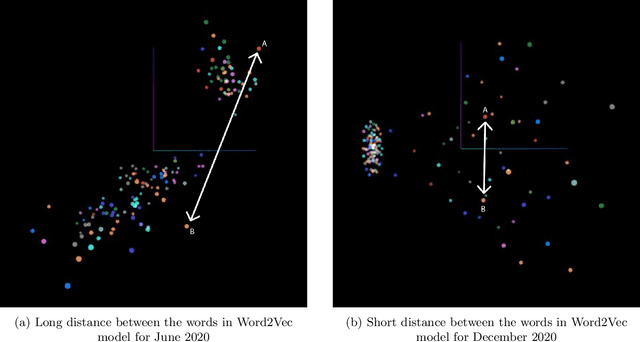

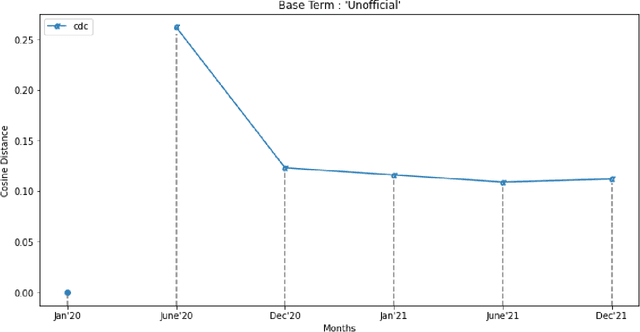

Abstract:The present study proposes a novel method of trend detection and visualization - more specifically, modeling the change in a topic over time. Where current models used for the identification and visualization of trends only convey the popularity of a singular word based on stochastic counting of usage, the approach in the present study illustrates the popularity and direction that a topic is moving in. The direction in this case is a distinct subtopic within the selected corpus. Such trends are generated by modeling the movement of a topic by using k-means clustering and cosine similarity to group the distances between clusters over time. In a convergent scenario, it can be inferred that the topics as a whole are meshing (tokens between topics, becoming interchangeable). On the contrary, a divergent scenario would imply that each topics' respective tokens would not be found in the same context (the words are increasingly different to each other). The methodology was tested on a group of articles from various media houses present in the 20 Newsgroups dataset.
Modeling context and situations in pervasive computing environments
Mar 24, 2015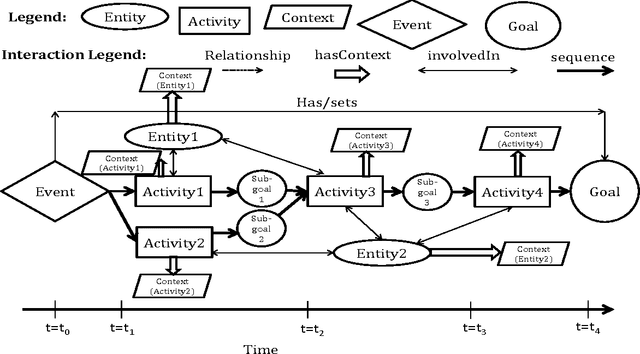
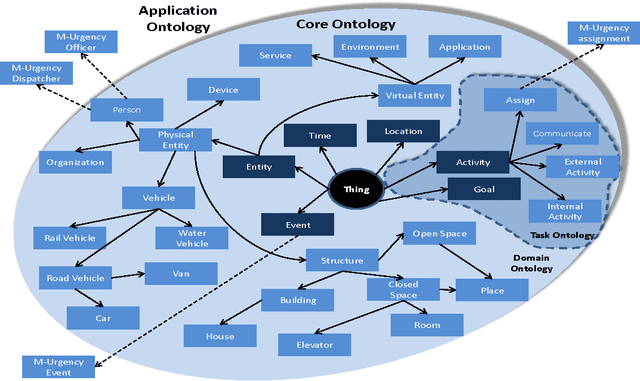
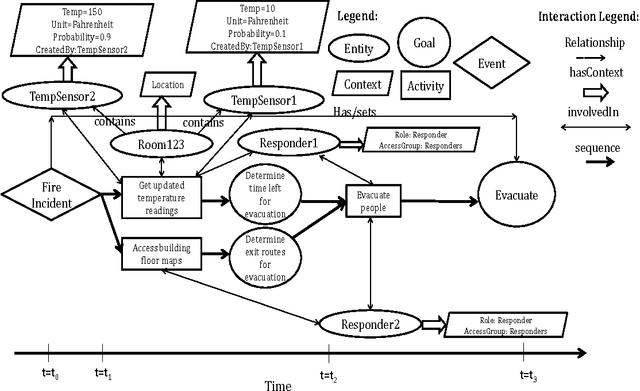
Abstract:In pervasive computing environments, various entities often have to cooperate and integrate seamlessly in a \emph{situation} which can, thus, be considered as an amalgamation of the context of several entities interacting and coordinating with each other, and often performing one or more activities. However, none of the existing context models and ontologies address situation modeling. In this paper, we describe the design, structure and implementation of a generic, flexible and extensible context ontology called Rover Context Model Ontology (RoCoMO) for context and situation modeling in pervasive computing systems and environments. We highlight several limitations of the existing context models and ontologies, such as lack of provision for provenance, traceability, quality of context, multiple representation of contextual information, as well as support for security, privacy and interoperability, and explain how we are addressing these limitations in our approach. We also illustrate the applicability and utility of RoCoMO using a practical and extensive case study.
 Add to Chrome
Add to Chrome Add to Firefox
Add to Firefox Add to Edge
Add to Edge